
™
Quick Start Guide
Dolphin® 9500 Series
Mobile Computers
Windows Mobile ™ 2003
Software for Pocket PCs

Disclaimer
Hand Held Products, Inc. (“Hand Held Products”) reserves the right to make
changes in specifications and other information contained in this document
without prior notice, and the reader should in all cases consult Hand Held
Products to determine whether any such changes have been made. The
information in this publication does not represent a commitment on the part of
Hand Held Products.
Hand Held Products shall not be liable for technical or editorial errors or
omissions contained herein; nor for incidental or consequential damages
resulting from the furnishing, performance, or use of this material.
This document contains proprietary information that is protected by copyright. All
rights are reserved. No part of this document may be photocopied, reproduced,
or translated into another language without the prior written consent of Hand
Held Products.
© 2005 Hand Held Products, Inc. All rights reserved.
Web Address: www.handheld.com
Trademarks
Dolphin, HomeBase, Mobile Base and QuadCharger are trademarks or
registered trademarks of Hand Held Products, Inc.
Windows Mobile, Windows, Windows NT, Windows 2000, Windows ME,
Windows XP, ActiveSync, Outlook, and the Windows logo are trademarks or
registered trademarks of Microsoft Corporation.
The Bluetooth trademarks are owned by Bluetooth SIG, Inc., U.S.A. and licensed
to Hand Held Products.
Other product names mentioned in this manual may be trademarks or registered
trademarks of their respective companies and are hereby acknowledged.

Dolphin® 9500 Series Mobile Computers Quick Start Guide iii
Congratulations! ...................................................................1-1
Dolphin 9500 Series Terminals ............................................1-1
Dolphin 9500 Series Peripherals and Accessories...............1-1
Hardware Overview..............................................................1-2
Setting Up Dolphin 9500 Series Terminals...........................1-4
Unpack the Carton and Verify its Contents ..........................1-4
Install the Main Battery Pack................................................1-5
Charge the Main and Backup Batteries................................1-5
Initialize the Mobile Computer..............................................1-7
Today Screen ......................................................................1-9
Navigation Bar......................................................................1-9
Verifying Operations with Demos ......................................1-10
Verifying Radio Status .......................................................1-11
Adjusting the Backlight ......................................................1-13
Entering Information...........................................................1-14
Using the Keyboards..........................................................1-14
Using the Stylus..................................................................1-18
Using the Imager ...............................................................1-19
Taking an Image ................................................................1-21
Soft Reset (Warm Boot) .....................................................1-21
Hard Reset (Cold Boot)......................................................1-21
Suspend Mode ...................................................................1-22
Communications.................................................................1-22
Troubleshooting..................................................................1-22
Product Service and Repair ...............................................1-24
Technical Assistance .........................................................1-25
Limited Warranty ...............................................................1-26
FCC Compliance................................................................1-27
Table of Contents

Dolphin® 9500 Series Mobile Computers Quick Start Guide 1
Dolphin 9500 Series Quick Start Guide
Congratulations!
You have made a wise choice in selecting the Dolphin, a device known
worldwide for the following features:
• Microsoft Windows Mobile 2003 Software for Pocket PCs
• Integrated, wireless, triple-radio design for real-time data collection
• Ergonomic form factor and lightweight design
• Rugged construction that withstands harsh treatment and real world use
• Adaptus Imaging Technology provides advanced point-and-shoot
decoding and imaging
• 7.4V, 14.8 watt hour Lithium-ion (Li-ion) batteries
Dolphin 9500 Series Terminals
There are four terminals in the Dolphin 9500 Series:
Dolphin 9500 Ergonomic form factor for single-handed use.
Dolphin 9550 Integrated pistol grip for high-volume scanning applications.
Dolphin 9501 Flashlight form factor a laser scanner and imager.
Dolphin 9551 Integrated pistol-grip with a laser scanner and imager.
Dolphin 9500 Series Peripherals and Accessories
Dolphin HomeBase
™
Charging/communications cradle with auxiliary battery
well. Data transfers via RS-232 serial or USB ports.
Dolphin MobileBase
™
Mobile charging/communication cradle. RS-232 serial
transfers data transfers and powers out at 5 volts.
Dolphin
QuadCharger
™
Four-slot battery charger that charges four Li-ion
batteries in under four hours. One slot doubles as a
battery analyzer.
Dolphin Mobile
Charger
Charges a Dolphin terminal by plugging into a vehicle
cigarette lighter/power port.
Dolphin Net Base
Four-slot charging/communication cradle designed for
Ethernet-based communications.
Dolphin ChargeBase
Four-slot charging cradle that stores, powers, and
charges a terminal in each slot.
Dolphin Cable Kits
USB or serial cables that charge and communicate
with the terminal directly, without a cradle.

2 Dolphin® 9500 Series Mobile Computers Quick Start Guide
Hardware Overview
The front, side, and bottom panels of all Dolphin 9500 Series terminals are the same.
Bottom Panel
Note: Dolphin 9550 and Dolphin 9551 terminals do not have a hand strap.
SCAN
ESC
TAB
SFT
AB
C
E
F
G
I
J
K
M
N
O
S
RQ
UV
W
Y
Z
D
H
L
P
T
X
NUM
ENT
1 2 3
7 8 9
4 5 6
; :
*
@
F1 F2 F3 F4
F5 F6 F7 F8
START INS BKSP DEL
CTRL ALT
SEND
END
POWER
V
O
L
P
G
V
O
L
P
G
+
+
- 0
,
SP
Decode LED
N
avigation keys
SCAN key
Keypad
Magnesium-
alloy top cover
Image Engine window
Scan LED
LCD with
Touch Screen
IrDA COM Port
Access Door to the
Secure Digital (SD)
memory interface
Audio Jack
(2.5mm)
Hand Strap
Front Panel Side Panel
17-pin industrial-grade
mechanical connector
Hand strap clip

Dolphin® 9500 Series Mobile Computers Quick Start Guide 3
Dolphin 9500 Back Panel
Note: The back panel of the Dolphin 9501 has an expanded bottom housing to
accommodate the laser engine.
Dolphin 9550 Back Panel
Dolphin 9550 and Dolphin 9551 terminals feature an integrated pistol-grip.
Note: The back panel of the Dolphin 9551 has an expanded bottom housing to
accommodate the laser engine.
Battery Well
(underneath the battery)
Battery
Stylus (in slot)
Speaker
Microphone
Pistol-Grip Handle
Image Engine
Window
Rubber Nose
Bumpers
Scan Trigger
Stylus (inserted
in the handle)
Rubber Bumper

4 Dolphin® 9500 Series Mobile Computers Quick Start Guide
Setting Up Dolphin 9500 Series Terminals
1. Unpack the carton and verify its contents - page 4.
2. Install the battery in the terminal - page 5.
3. Charge the main battery in the terminal for a minimum of four hours - page 5.
4. Turn the power on and initialize the mobile computer - page 7.
5. Allow Autoinstall to run - page 8.
Unpack the Carton and Verify its Contents
Verify that the carton contains the following items:
• Dolphin 9500 Series mobile computer (the terminal)
• Main battery pack (7.4v Li-ion)
• Microsoft Companion CD-ROM
• Dolphin 9500 Series Quick Start Guide
Be sure to keep the original packaging in the event that the Dolphin terminal
should need to be returned for service - see page 24.
Each order includes a Dolphin Software Development Kit and User’s Guide CD;
verify that you received this CD with your order. If you ordered accessories, verify
that they are also included with the order.
The Dolphin 9500 and Dolphin 9501 Hand Strap
The Dolphin 9500 and Dolphin 9501 ship
with the handstrap installed and fastened
with a clip on the bottom panel - see page 2.
To install the battery pack, you must detach
the handstrap.
To detach the handstrap, push the clip of the
handstrap down and away from the terminal.
Move the strap up and away from the bottom
panel.
To re-attach the handstrap, slide the clip
back into place on the bottom panel.
Clip
Hand Strap

Dolphin® 9500 Series Mobile Computers Quick Start Guide 5
Install the Main Battery Pack
Use only the Li-ion battery packs provided by Hand Held Products. The
use of any battery pack not sold/manufactured by Hand Held Products
in the Dolphin 9500 Series terminal will void your warranty and may
result in damage to the Dolphin terminal or battery.
1. Remove the Li-ion battery pack from its
package. Hold the terminal with the
front panel (keyboard) facing down.
2. If necessary, detach the handstrap.
3. Take the battery and insert the end
without the locking tab into the top of
the battery well and push down with a
hinging motion until the locking tab
snaps.
4. If necessary, re-attach the hand strap.
To remove the battery pack, detach the
handstrap, press the locking tab on the
battery pack away from the bottom panel,
and pull the battery pack up with a hinging
motion.
Charge the Main and Backup Batteries
The power supply for the Dolphin mobile computer consists of two types of
battery power: the main battery pack installed in the back panel and the backup
battery located inside the terminal.
The main battery powers the terminal. The internal backup battery charges off
the main battery, and maintains the application data stored in RAM and the
system clock for up to 30 minutes when the terminal’s main battery pack is
completely discharged or removed.
Before initial use - The terminals are shipped with both batteries discharged of
power. Charge the main battery pack for a minimum of four hours before
initial use in the terminal.
For charging, use a Dolphin 9500 Series peripheral and the power
cables provided by Hand Held Products. Use of peripherals or cables
not sold/manufactured by Hand Held Products will void the warranty
and may damage the terminal.
!
!

6 Dolphin® 9500 Series Mobile Computers Quick Start Guide
Using the Dolphin HomeBase
1. Connect the HomeBase to the power supply provided
by Hand Held Products.
2. Slide the terminal into the terminal well until the Dock
LED lights solid green to indicate that the terminal is
properly seated.
3. The battery pack begins charging.
Using the Mobile Base
1. Connect the Mobile Base to the appropriate power
source using a cable from Hand Held Products.
2. Slide the terminal into the terminal well until the Dock
LED lights solid green to indicate that the terminal is
properly seated.
3. The battery pack begins charging.
Other Charging Options
When the Li-ion battery is installed in the terminal, use a
charging/communication cable.
When the Li-ion battery is not installed in the terminal,
place the battery pack in the Dolphin QuadCharger.
S
C
A
N
E
S
C
T
A
B
S
F
T
A
B
C
E
F
G
I
J
K
M
N
O
S
R
Q
U
V
W
Y
Z
D
H
L
P
T
X
N
U
M
E
N
T
1
2
3
7
8
9
4
5
6
;
:
*
@
F
1
F
2
F
3
F
4
F
5
F
6
F
7
F
8
S
T
A
R
T
I
N
S
B
K
S
P
D
E
L
C
T
R
L
A
L
T
S
E
N
D
E
N
D
P
O
W
E
R
V
O
L
P
G
V
O
L
P
G
+
+
-
0
,
S
P
C
harging a Spare Battery Pack
The HomeBase features an
auxiliary battery well. Insert a
spare battery pack into this
well and the battery charges
in four hours. The auxiliary
battery well charges batteries
independently of the terminal
well. The Aux Battery LED
indicates the charging status
of the battery in this well.
D
O
C
K
C
O
M
M

Dolphin® 9500 Series Mobile Computers Quick Start Guide 7
Initialize the Mobile Computer
1. Power on the device. The decode LED lights and the scan LED blinks for
approximately three seconds. Do NOT press any keys while the terminal is
booting up.
2. The terminal initializes and the splash screen displays for a few seconds. The
Build numbers indicate the software version number.
3. The system performs a hard reset. When the display activates again, follow
the instructions that appear.
4. You are prompted to align the screen by tapping the target five times. Use
the stylus provided by Hand Held Products.
• Alignment should always be performed with a stylus designed for touch
screen applications. The small point is required for accurate calibration.
7.XX 7.XX 7.XX
Bootloader Kernel Keyboard

8 Dolphin® 9500 Series Mobile Computers Quick Start Guide
• Press the stylus firmly into the center of the cross-hair target once and
release. Do not “double-tap” the target.
• You can re-align the screen at any time by going to Start > Settings >
System tab > Screen.
5. Complete the series of screens that teach you how to use the stylus and
popup menus.
6. Setup is complete. Wait as your terminal begins auto-installing programs.
7. When Autoinstall is complete, the system performs a soft reset that ends on
the Today screen.
Autoinstall
Autoinstall occurs after each hard reset. For each program that loads, a status
bar indicates that the program is loading. Do NOT touch the keyboard or the
screen while programs are loading.
All configurations of the Dolphin 9500 Series install Demos and Utilities. If the
terminal is configured with a wireless radio, the appropriate radio drivers and
utilities for each radio install.
After Autoinstall is complete, the terminal performs a soft reset automatically.
When it finishes booting up after the soft reset, the Today screen appears - see
page 9.

Dolphin® 9500 Series Mobile Computers Quick Start Guide 9
Today Screen
When you turn on your device for the first time, you’ll see the Today screen. It
provides the tools you need to navigate the system.
Navigation Bar
The navigation bar at the top of the screen displays the date and time and
provides access to the Start menu.
Command Bar
The command bar along the bottom of the screen contains menus, appropriate
application icons, and perform tasks.

10 Dolphin® 9500 Series Mobile Computers Quick Start Guide
Verifying Operations with Demos
Dolphin 9500 Series mobile computers contain Demos that you can use to verify
imaging and decoding.
Verify Imaging
The Image Demo enables you to use the imager to capture an image.
1. Go to Start > Demos > Image Demo. The image demo opens.
2. Point the terminal at an object and press the SCAN key. A preview of the
object appears on the terminal screen, and the decode and scan LEDs light.
3. Release the SCAN key. The image is captured. By default, the image saves
to the My Device folder as “imagedemo.jpg.” To save to a different location,
tap File > Save As and select a new location.
4. Press the ESC key to close the demo.
For more information about taking an image, see Using the Imager on page 19.
Verify Decoding
The Scan Demo enables you to decode a sample bar code.
1. Go to Start > Demos > Scan Demo.
2. Aim the terminal at a bar code and press the SCAN key. The scan LED lights
red, and a green aimer beam projects out from the scanner.
3. When a good scan is obtained, the decode LED lights solid green and the
terminal beeps. The bar code readout appears on the screen.
4. Press the ESC key to close the demo.
Sample Bar Codes
Use the following bar codes to verify decoding:
Note: The Dolphin 9551 and Dolphin 9501 support only 1D symbologies; use
Code 128 to verify scanning.
For more information, see Decoding a Bar Code on page 19.
Sample 128 Sample PDF417
Code 128 PDF417 Test Message

Dolphin® 9500 Series Mobile Computers Quick Start Guide 11
Verifying Radio Status
Dolphin 9500 Series terminals can be configured with 802.11b, Bluetooth™,
GSM/GPRS (Dolphin 9500 only) radios or a combination of these radios.
Radio Driver Installation
Radio drivers install during the autoinstall whenever the mobile computer is
initialized; when first turned on or after a hard reset. Only the appropriate drivers
for your terminal’s radio configuration install.
Radio Manager
The Radio Manager enables you to choose which of the terminal’s radios are
powered up or down. When powered up, the radio is transmitting; when powered
down, the radio is not transmitting.
Verify which radio is powered up after the autoinstall and soft reset are complete.
When a single radio installs, its radio driver is powered up automatically. In
general, when more than one radio installs, the terminal powers up the 802.11b
radio. However, if a GSM radio is installed, the terminal powers up the GSM
radio.
Radio Combinations
Dolphin 9500 Series terminals can be configured with more than one radio.
Co-located radios
You can have both radios installed but
can operate only one at a time.
• 802.11b and GSM/GPRS
Co-operational radios
You can power up and operate both
radios simultaneously.
• Bluetooth and 802.11b
• Bluetooth and GSM/GPRS

12 Dolphin® 9500 Series Mobile Computers Quick Start Guide
Verify the Radio Status
1. Go to Start > Settings > Connections tab > Radio Manager. The Radio
Manager appears identifying which radio modules are installed on the
terminal.
2. The highlighted entry is the radio that is currently powered up; its Status is
Ready.
Powering up a Radio or Radio Combination
To successfully power up a radio, both the hardware module and the software
driver must be installed on the terminal.
1. In the Radio Modes list, select the radio or radio combination.
2. Tap Apply. When the radio is powered up, the Status field reads “Success.”
3. Tap OK to save and exit the Radio Manager.
For detailed information about the Radio Manager and radio options, see the
Dolphin 9500 Series User’s Guide.

Dolphin® 9500 Series Mobile Computers Quick Start Guide 13
Adjusting the Backlight
Both the keyboard and the display are backlit to enable better viewing in low-light
conditions. All terminal configurations contain a Backlight key that toggles the
keyboard backlight on and off; see Backlight, page 1-14. Backlight functionality
differs for color and monochrome displays.
On a Color Display
The backlight for the color display is user-defined. There are two tabs: one for
Battery and the other for External power. The options on each tab are the same.
Go to Start > Settings > System tab >
Backlight. Backlight settings open
displaying the Battery tab.
In the Turn off backlight… drop-down list,
select the number of minutes you want to
elapse before the backlight automatically
turns off.
Select the Turn on backlight… option if
you want the display backlight to turn on
when the a button is pressed or the touch
screen is tapped.
In the Dim backlight if… drop-down list,
select the number of minutes you want to
elapse before the backlight dims.
Move the Backlight Intensity slider to set
the intensity of the backlight.
Tap OK to save settings. The display
backlight functions according to the settings
saved here.
On a Monochrome Display
Backlight The backlight for monochrome displays turns on and off when you
press the Backlight key but not when you tap the screen.
Contrast In addition to the backlight, monochrome displays feature contrast
adjustment. You can adjust the contrast using the keyboard or the
system settings.
Using the Keyboard
Press and hold
• Red + ESC to decrease the contrast
• Red + TAB to increase the contrast
All three keyboards have red indicators
over each key to indicate which key to
press in combination with the red
modifier key to adjust the contrast.

14 Dolphin® 9500 Series Mobile Computers Quick Start Guide
Using the System Settings
Tap Start > Settings > System tab >
Contrast. The current settings display.
Use the slider to adjust the contrast to the
desired setting.
The contrast instantly adjusts as you move
the slider between Light and Dark.
Tap OK to save adjustments.
Entering Information
To enter information, you can use
• the keyboard (page 14),
• the stylus on the touch screen (page 18),
• the imager (page 19).
Using the Keyboards
The Dolphin 9500 Series features three keyboard options: 35-key numeric/alpha,
43-key alpha/numeric, and 56-key full alpha/numeric. Each keyboard is
backlit
for easy viewing in various lighting conditions and contains centrally located keys
for both right- and left-hand operation. Each keyboard also contains function,
navigation and modifier keys.
Using the Function Keys
Name Key Function
Backlight
By default, the Backlight key turns the keyboard
backlight on and off; see page 13.
Backspace
The BKSP key moves the cursor back one space each
time the key is pressed. If you are typing text, the
previous charac3ter is deleted each time this key is
pressed. Press and hold to delete multiple characters.
This key appears only on the 35- and 56-keyboards. On
the 43-key keyboard, backspacing is achieved by
pressing Red + SP keys.
Delete
The Delete key deletes the next character forward each
time the key is pressed.
This key appears only on the 35- and 56-key keyboards.
On the 43-key keyboard, deleting is achieved by
pressing Red + Backlight keys.
Enter
The Enter key confirms data entry.
Escape
The Escape key performs a cancel action.

Dolphin® 9500 Series Mobile Computers Quick Start Guide 15
Using the Navigation Keys
Located in the center of each keyboard for easy access with either hand, the
navigation keys enable you to navigate the cursor through an application screen.
Using the Modifier Keys
Power
The Power key puts the terminal into and wakes the
terminal from suspend mode. This is also known as
suspend/resume.
SCAN
The SCAN key activates the image/scan engine and
“wakes” the terminals from suspend mode. Its position
allows convenient one-handed engine activation.
Space
The Space key moves the cursor one space.
Tab
The Tab key moves the cursor to the next tab stop or the
next control (on a form, for instance).
Press To …
Move the cursor up one row or line.
Move the cursor down one row or line.
Move the cursor one character to the right.
Move the cursor one character to the left.
Name & Key Function
Shift
The SFT key modifies only the next key pressed. In addition, you
can double-tap SFT or press SFT + Red to toggle Caps Lock on
and off.
CTRL and ALT
Functions of the ALT and CTRL keys depend on the software
application in use and the keys pressed in combination with each.
Blue and Red
The blue and red keys are used in combination with other keys to
type special characters and perform system functions. Each key
modifies only the next key pressed. The overlay of each keyboard
is color-coded to indicate the character typed or function
performed when each key is pressed with the red or blue keys.
Using the Function Keys
Name Key Function

16 Dolphin® 9500 Series Mobile Computers Quick Start Guide
35-key Numeric/Alpha Keyboard
Alpha Lock Key
Because the 35-key keyboard defaults to numeric mode, the Alpha Lock key
appears only on the 35-key keyboard. Numeric mode is when you type numbers
with the number keys. Alpha mode is when you type letters with the number keys.
The Alpha Lock key enables you to toggle between numeric and alpha modes.
On the overlay, there are alpha lock indicators above specific number keys that
specify the letter typed when you press that key in alpha mode. Please note that
when typing in alpha mode, you must use the same multi-press method you
would use when typing letters on a phone keypad. Each key press types the next
letter in the sequence as displayed by the alpha lock indicator.
Enter key
Backlight key
Alpha Lock key
Shift key
Navigation keys
Tab key
CTRL, Blue, Red, ALT Modifier keys
SCAN key
Power key
Backspace key
Function keys
Space key
Escape key
Delete key
Alpha Lock Indicators
Page is loading ...
Page is loading ...
Page is loading ...
Page is loading ...
Page is loading ...
Page is loading ...
Page is loading ...
Page is loading ...
Page is loading ...
Page is loading ...
Page is loading ...
Page is loading ...
Page is loading ...
Page is loading ...
Page is loading ...
Page is loading ...
-
 1
1
-
 2
2
-
 3
3
-
 4
4
-
 5
5
-
 6
6
-
 7
7
-
 8
8
-
 9
9
-
 10
10
-
 11
11
-
 12
12
-
 13
13
-
 14
14
-
 15
15
-
 16
16
-
 17
17
-
 18
18
-
 19
19
-
 20
20
-
 21
21
-
 22
22
-
 23
23
-
 24
24
-
 25
25
-
 26
26
-
 27
27
-
 28
28
-
 29
29
-
 30
30
-
 31
31
-
 32
32
-
 33
33
-
 34
34
-
 35
35
-
 36
36
Hand Held Products Dolphin 9501 Specification
- Type
- Specification
- This manual is also suitable for
Ask a question and I''ll find the answer in the document
Finding information in a document is now easier with AI
Related papers
-
Hand Held Products Dolphin 9500 Series Quick start guide
-
Dolphin Dolphin 9550 User manual
-
Dolphin Peripherals 9500 User manual
-
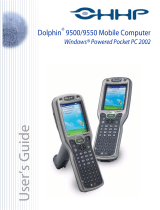 Hand Held Products Dolphin 9550 User manual
Hand Held Products Dolphin 9550 User manual
-
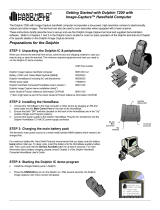 Hand Held Products Dolphin 7200 User manual
Hand Held Products Dolphin 7200 User manual
-
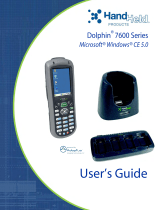 Hand Held Products Dolphin 7600 User manual
Hand Held Products Dolphin 7600 User manual
-
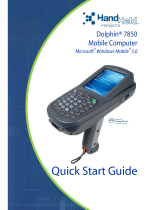 HandHeld Entertainment Dolphin 7850 User manual
HandHeld Entertainment Dolphin 7850 User manual
-
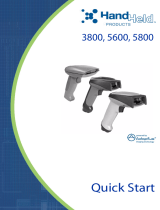 Hand Held Products 5800 Quick start guide
Hand Held Products 5800 Quick start guide
-
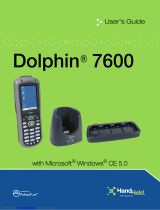 Hand Held Products 7600BP-121-21EE - Hand Held Products Dolphin 7600 User manual
Hand Held Products 7600BP-121-21EE - Hand Held Products Dolphin 7600 User manual
-
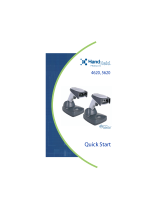 Hand Held Products IMAGETEAM 5620 Quick start guide
Hand Held Products IMAGETEAM 5620 Quick start guide
Other documents
-
HP IC56A User manual
-
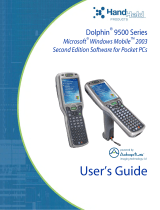 Dolphin Peripherals 9500 User manual
Dolphin Peripherals 9500 User manual
-
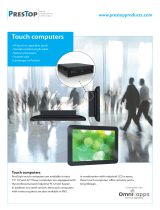 PresTop PT-C-19W-CAP Datasheet
PresTop PT-C-19W-CAP Datasheet
-
Handheld Dolphin 7900 Series Quick start guide
-
Dolphin Peripherals SS 2.1/Terminal III User manual
-
Honeywell HomeBase D7900 User manual
-
Handheld Pistol Grip User manual
-
Handheld Pistol Grip User manual
-
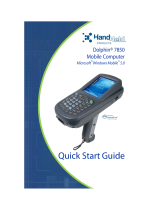 HandHeld Entertainment Dolphin 7850 User manual
HandHeld Entertainment Dolphin 7850 User manual
-
Honeywell Dolphin 7900 User manual














































